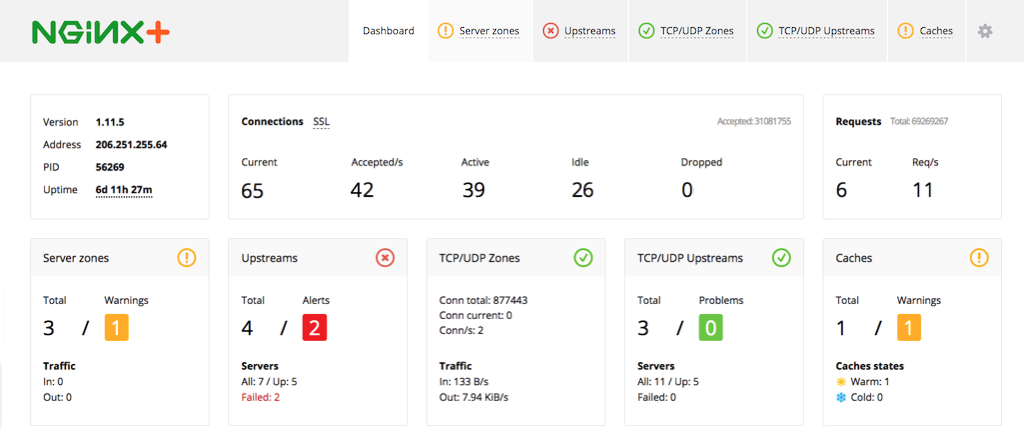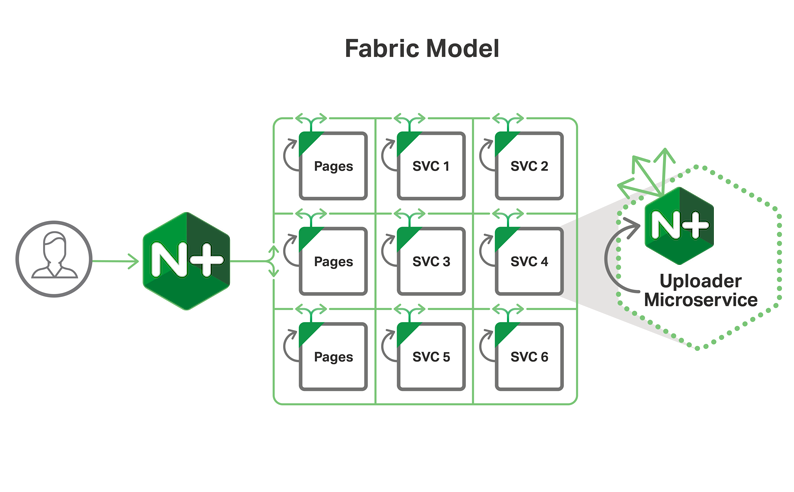The past year has been a big one for us here at NGINX, Inc. Our open source product, NGINX, recently became the web server of choice at more of the world’s 100,000 busiest websites than any other server. For the first time, we were included in the Gartner Magic Quadrant for Application Delivery Controllers. And NGINX Plus took a big step up in its ability to secure your sites and apps with the introduction of NGINX ModSecurity WAF, a dynamic module for NGINX Plus based on the popular open source ModSecurity web application firewall (WAF) software.
[Editor – NGINX ModSecurity WAF officially went End-of-Sale as of April 1, 2022 and is transitioning to End-of-Life effective March 31, 2024. For more details, see F5 NGINX ModSecurity WAF Is Transitioning to End-of-Life on our blog.]
Our customers, and potential customers, keep up on all of these developments through the NGINX blog. Our top all‑time blog posts show our customers’ interest in three main topics:
- New releases of NGINX Plus
- Microservices
- Performance
All three topics show the strength of NGINX software – both NGINX Open Source, which was first released 12 years ago, and our supported, commercial product, NGINX Plus.
1. New Releases of NGINX Plus
NGINX Plus is growing steadily in popularity, with many new enterprise customers and growing use within existing customer sites. Three of its main advantages, as mentioned in a recent blog post about NGINX Plus are cost savings versus the competition (F5 BIG‑IP and Citrix NetScaler); its longstanding, “evergreen” features, such as support; and a steady stream of new features.
Several of our top all‑time blog posts are for recent releases of NGINX Plus:
- NGINX Plus R6, released mid‑2015, which featured load balancing, high availability, and monitoring features
- NGINX Plus R7, from late 2015, with full HTTP/2 support, thread pools, socket sharding, and a new NGINX Plus monitoring dashboard
- All four of our 2016 NGINX Plus releases

You may find that the evergreen features, or the new features, in NGINX Plus grab your interest. You can contact NGINX for an evaluation of your specific situation.
2. Microservices Education and How‑To
The microservices pattern has achieved “rock star” status in software development. And it’s the single most popular development topic on the NGINX blog. We here at NGINX are leaders in conceptual education about microservices and how‑to information, with three different threads around microservices:
- Microservices adoption at Netflix
- The Chris Richardson blog post series, a conceptual introduction
- Development of the NGINX Plus‑powered microservices reference architecture (MRA)
Our recent blog post, Moving to Microservices, gives details on all three of these threads. It also highlights the NGINX Plus‑specific features of NGINX Plus, some of which are used to great advantage in the Fabric Model of the MRA.
Two blog posts from the Chris Richardson series, Introduction to Microservices and Building Microservices: Using an API Gateway, are in our Top 10. Adopting Microservices at Netflix: Lessons for Architectural Design, from our Netflix series, joins them. And the most recent series, on the MRA, is moving up fast in page views.

NGINX offers high‑quality microservices training and a Professional Services team that includes leaders in microservices development. To learn more, reach out to NGINX today or visit NGINX Training.
3. Performance
Website performance is perhaps the single biggest driver of NGINX adoption. So it’s little wonder that performance‑related blog posts hold down 5 positions among our Top 10 blog posts. (And many of the higher‑ranking positions just below the Top 10 as well, for example our recent post with 10 Tips for 10x Performance.)
In fact, given how performance‑focused NGINX Plus customers are, it may be more surprising that new NGINX Plus releases and microservices hold down as many of the Top 10 spots as they do.
It’s also worth noting that our top‑performing blog posts tend to be older, having racked up page views steadily for years. The topics covered – rewrite rules, WebSocket, NGINX tuning, caching, and keepalive connections (which figure heavily in the Fabric Model of the MRA) – are like a list of greatest hits from the questions customers ask us.
NGINX offers high‑quality training for load balancing, our most popular performance topic, and our Professional Services team includes experts in performance optimization. To learn more, reach out to NGINX today.
Conclusion
As you can see from these topics, NGINX Plus is an easy choice for high‑volume and mission‑critical web apps. It’s as easy as A, B, C (the pun is intentional):
- Alkami Technology‘s upgrade to NGINX Plus load balancers
- Booxware‘s move from NGINX Open Source to NGINX Plus, which also opened the door to microservices
- Capital One‘s use of NGINX to cut costs by consolidating infrastructure


